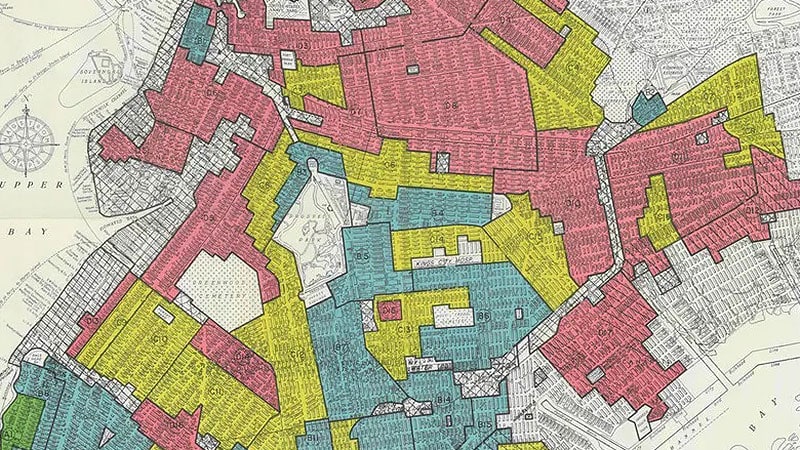
Structural racism in the form of historical housing discrimination in the US appears still to be associated with community stroke risk in the present day, a new study has found.
The cross-sectional study found that "redlining" — a US government policy active from the 1930s to the 1960s that labeled many inner-city Black communities as hazardous for investment — is still associated with modern-day stroke prevalence in New York City independently of contemporary social determinants of health and community prevalence of some relevant cardiovascular risk factors.
"Our results show that there is something about living in a previous 'redlined' area that correlates with stroke risk independent of traditional stroke risk factors," lead author, Benjamin Jadow, BA, a medical student at Montefiore Medical Center, New York City, told theheart.org | Medscape Cardiology.
"Our findings suggest that the increased stroke risk in these areas is not just due to race, but it is more to do with a historical structurally racist policy that is still having an effect today."
The study was published online in JAMA Network Open on April 5.
Jadow explained that "redlining" was a policy enacted by the US government in the 1930s as a way of deciding which neighborhoods received investment, a system that informed housing policy right up until the 1960s.
"One of the major criteria for a 'redlined' area was the racial composition," he noted. "If there was a high Black/Hispanic percentage of the population, it was considered hazardous for investment and difficult to get loans for housing or business, so it was harder to introduce wealth into these communities."
While the practice officially ended in 1968 with the passage of the Fair Housing Act, the socioeconomic impacts remain, with formerly "redlined" neighborhoods having less access to quality housing stock, transportation, schools, green space, sanitation services, and employment opportunities in the present day, the authors report.
For the current study, Jadow and co-authors sought to determine whether the original redlining designations, which gave areas one of four scores correlating to "best," "desirable," "declining," or "hazardous for investment," are still associated with modern-day community level stroke disparities in 2117 census tracts in New York City.
The researchers analyzed data on stroke prevalence and relevant risk factors including median age and prevalence of diabetes, hypertension, smoking, and hyperlipidemia at the census tract level from the Centers for Disease Control and Prevention (CDC) records.
They correlated this with weighted scores for historical redlining, and information on social determinants of health including race and ethnicity, median household income, poverty, low educational attainment, language barrier, uninsurance rate, social cohesion, and residence in an area with a shortage of healthcare professionals derived from the 2014-2018 American Community Survey.
Results showed that after adjusting for social determinants of health and other relevant covariates, the historical redlining score was independently associated with a higher community-level stroke prevalence (odds ratio, 1.02; 95% CI, 1.02 - 1.05; P < .001).
Several social determinants of health were also positively associated with stroke prevalence including educational attainment, poverty, language barrier, and healthcare professionals' shortage.
The researchers conclude that, "While further research is needed, these results suggest that there may be residual effects of the historical redlining score on community stroke risk in certain New York City communities that are additive to classic social determinants of health.
"Similar to residual effects on community stroke risk stemming from a legacy of slavery in the southeastern US, redlining may be yet another example of historical structural racism with enduring effects on community-level cardiovascular health and specifically stroke prevalence, disproportionately affecting racial and ethnic minority communities," they write.
"We know that lived environment influences health, but it is also important to recognize the impact of public policy on lived environment and subsequently its impact on health," Jadow added.
"There has been quite a bit of research on the contemporary effects of formerly redlined neighborhoods. These areas still often have less access to quality housing, good transport links, schools, green space, sanitation services, and employment opportunities. Even though the formal policy doesn't exist anymore, the effects are still very much real."
He said the study highlights the importance of investing in interventions to mitigate the effects of such hazardous public policies on these communities. "If we want to effectively address these health disparities, it is important to recognize how public policy has shaped these disparities; we must address the lived-in environments of the people experiencing those disparities."
JAMA Netw Open. 2023;6(4):e235875. Full text
For more from theheart.org | Medscape Cardiology, follow us on Twitter and Facebook.
"still" - Google News
April 14, 2023 at 03:15AM
https://ift.tt/WhlurMo
Historical 'Redlining' Housing Policy Still Tied to Stroke Risk - Medscape
"still" - Google News
https://ift.tt/uPNrwFl
https://ift.tt/jyAJ7LU
Bagikan Berita Ini














0 Response to "Historical 'Redlining' Housing Policy Still Tied to Stroke Risk - Medscape"
Post a Comment